And Their Importance to Marine Life – Written by Valeria Pizarro
Let’s talk about sponges; a group of animals (yes, animals!) that have been living on earth for more than 640 million years. There are about 8,800 described species and most of them can be found in salty waters, like estuaries, coastal lagoons and oceans. In the scientific community sponges are called Porifera, which means “pore-bearing” due to the feeding strategy of sponges. They spend most of their life attached to the bottom filtering water through their bodies. Inside each sponge specialized cells, called collar cells, create internal currents that move the water from the outside to the inside of the sponge, and to the outside again. When the water is going through, the sticky nature of the collar cells allows them to capture oxygen, bacteria, organic matter and in few cases microscopic animals.
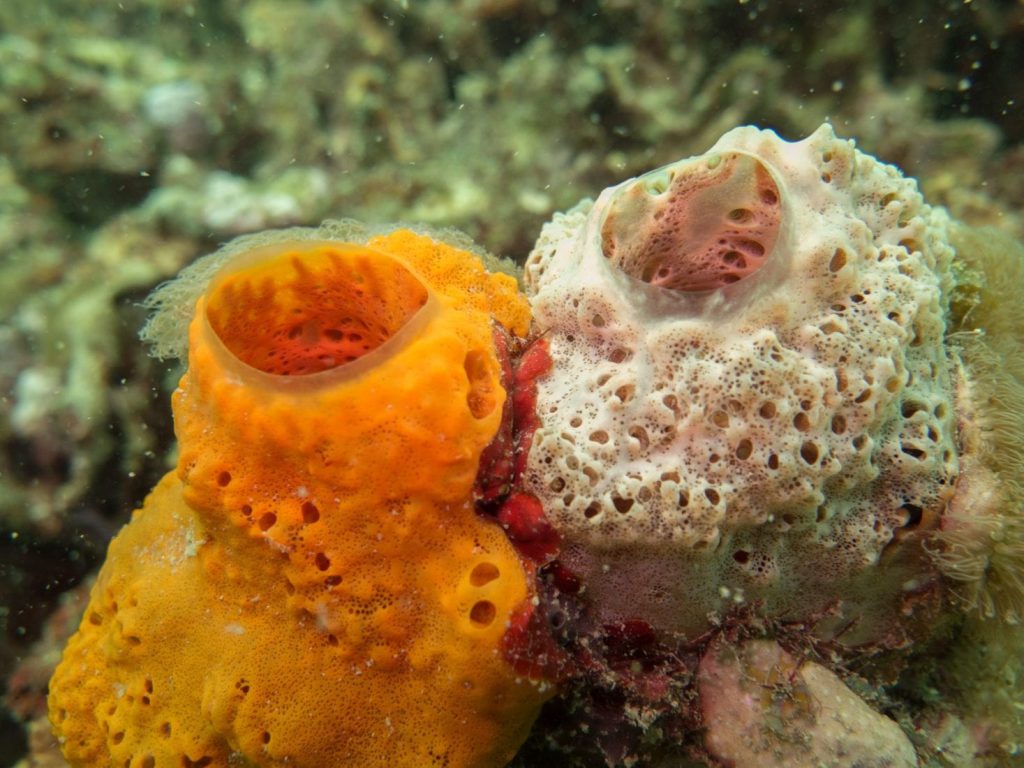
Above: Two unidentified species of Caribbean sponges. (Valeria Pizarro)
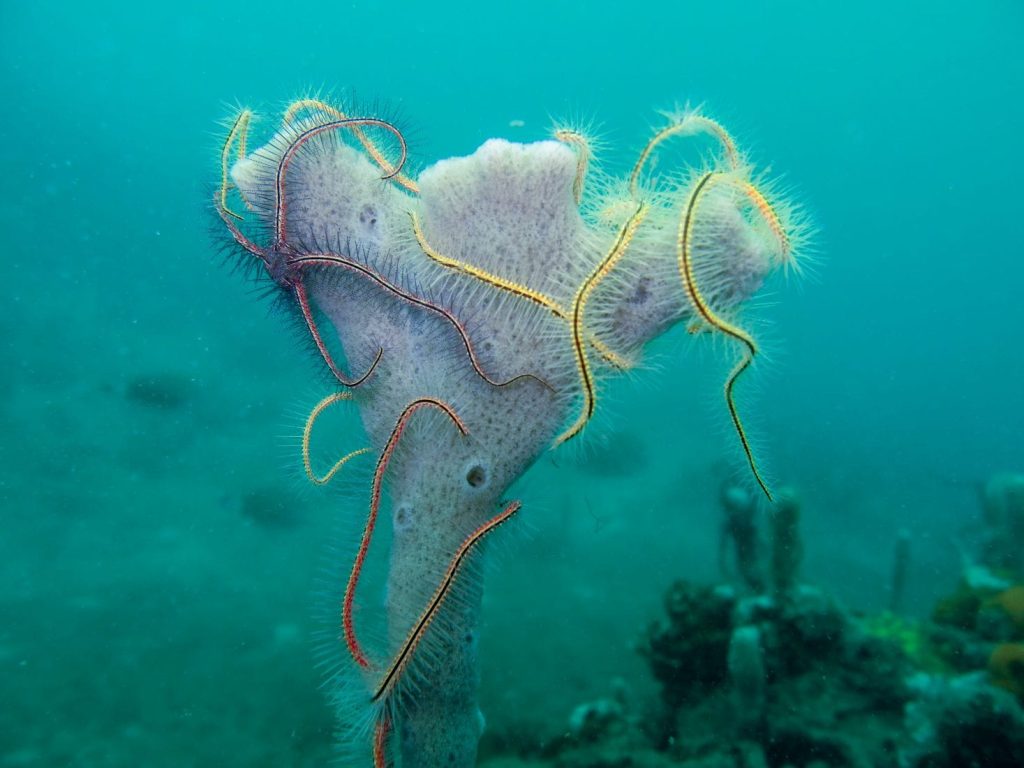
Above: Niphates erecta with brittle stars. (Valeria Pizarro)
Sponges can filter up to 10,000 times its own volume and this plays an important role in filtering water, cycling nutrients and providing home to a numerous of animals. Sponges are highly diverse in shape, size and color. Few animals feed on sponges due to the toxins and the spicules they produce, however hawksbill turtle, some fish and nudibranchs love to feed on these animals.We, humans, have used sponges to clean for more than 2,000 years, but those only comprise 12 species! More recently, scientists began researching the use of chemicals produced by sponges for medical purposes. For example, the drug cytosine arabinoside, used to treat cancer, was developed from a chemical first found in a sponge.
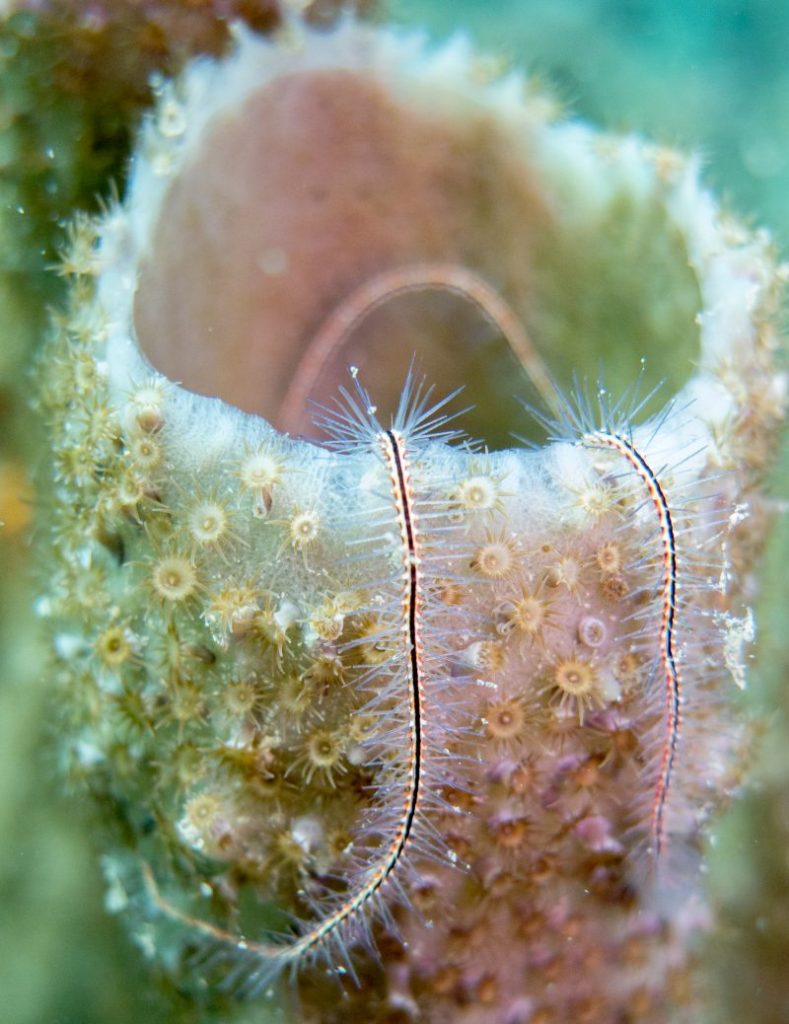
Above: Brittle star inside of a Niphates species. (Valeria Pizarro)
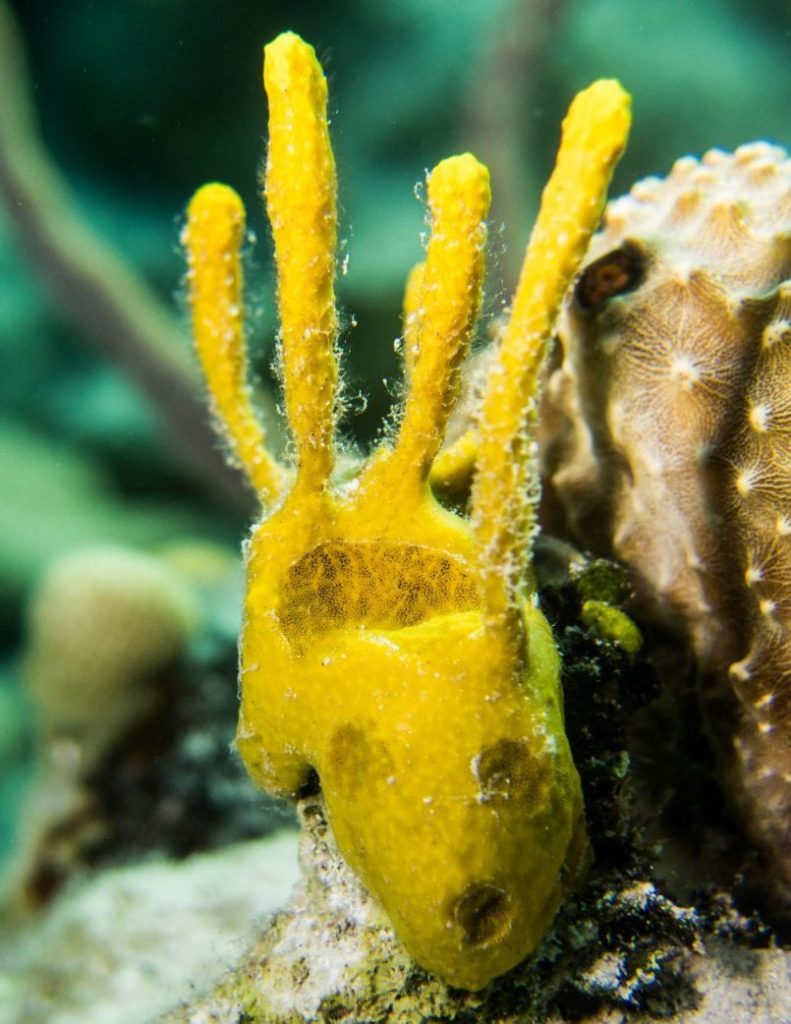
Above: Aplysina insularis (Valeria Pizarro)
SPONGES IN THE BAHAMAS
Specifically, in The Bahamas some species of sponges have been harvested for centuries by local fisherman or as they are usually called: spongers. In 2016 a project, financed by the Inter-American Developing Bank, supported sponging business by developing sustainable harvesting and better business practices in Andros, where the largest sponger community is located. Nowadays, fishermen understand the supply chain and have been distributing directly to national businesses, and for almost a year, the Bahamas Commercial Sponge Association (BCSA), the Bahamas Agricultural & Industrial Corporation (BAIC) and the Inter-American Development Bank started direct international sales.
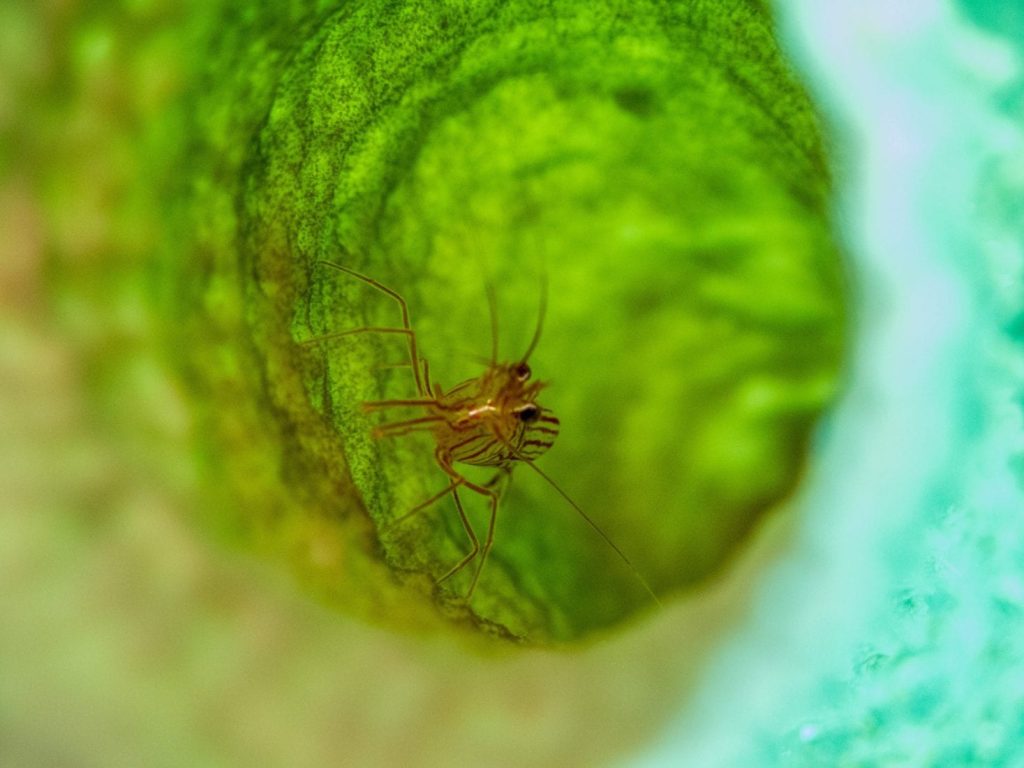
Above: Sponge peppermint shrimp (Lysmata pedersini) inside of a sponge. (Valeria Pizarro)
All the former has been a national strategy for revitalizing the sponge industry, leaded by BAIC and supported by the Inter-American Institute for Cooperation on Agriculture, the Bahamas National Trust, the Department of Marine Resources and BCSA board members.Though it’s not easy, if you want to start identifying Bahamian sponges check out the Caribbean sponge guide (https://spongeguide.uncw.edu/), where more than 50% of the photos were taken in different reef areas within The Bahamas.
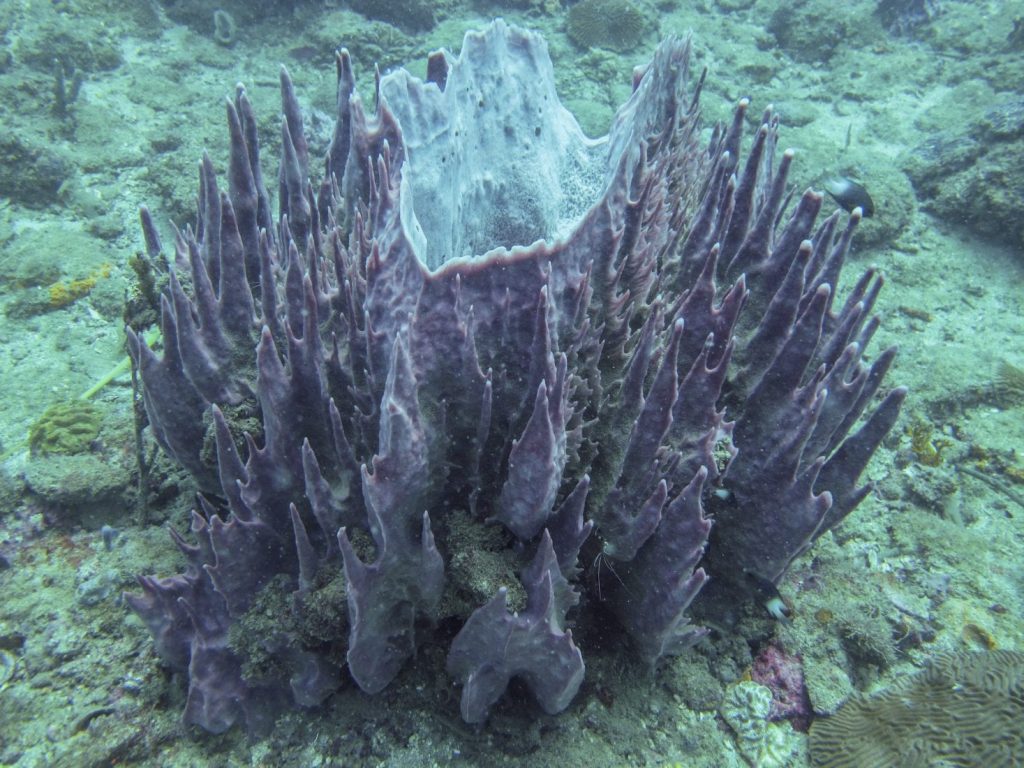
Above: Xestospongia muta. (Valeria Pizarro)
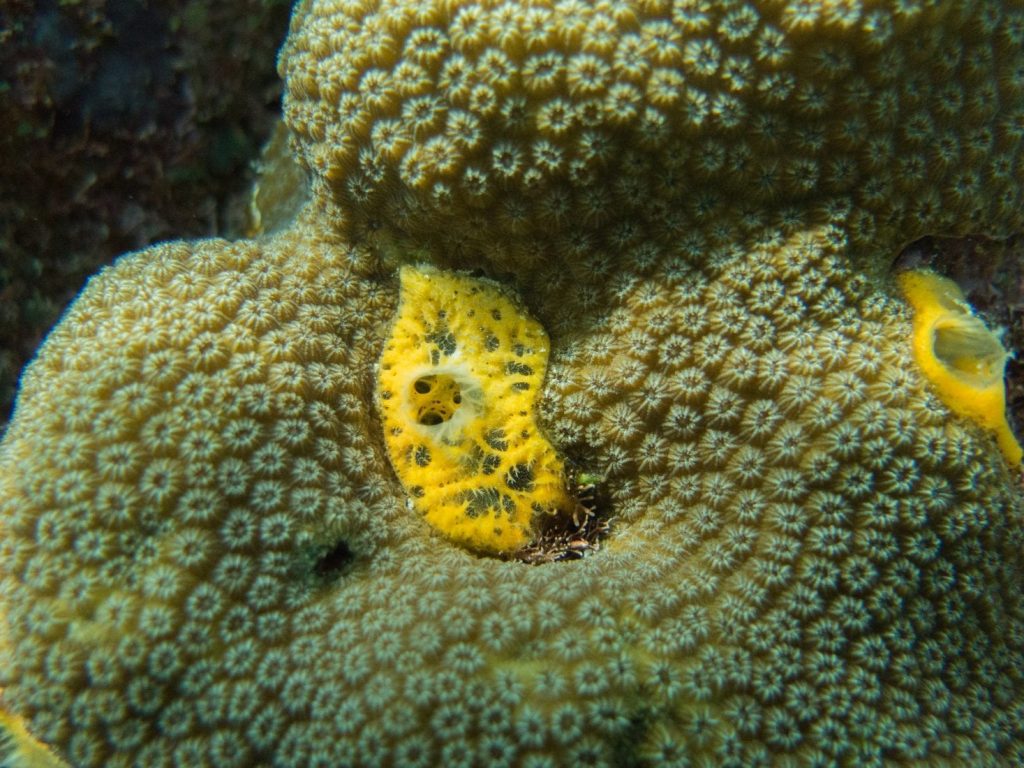
Above: Mycale laevis. (Valeria Pizarro)
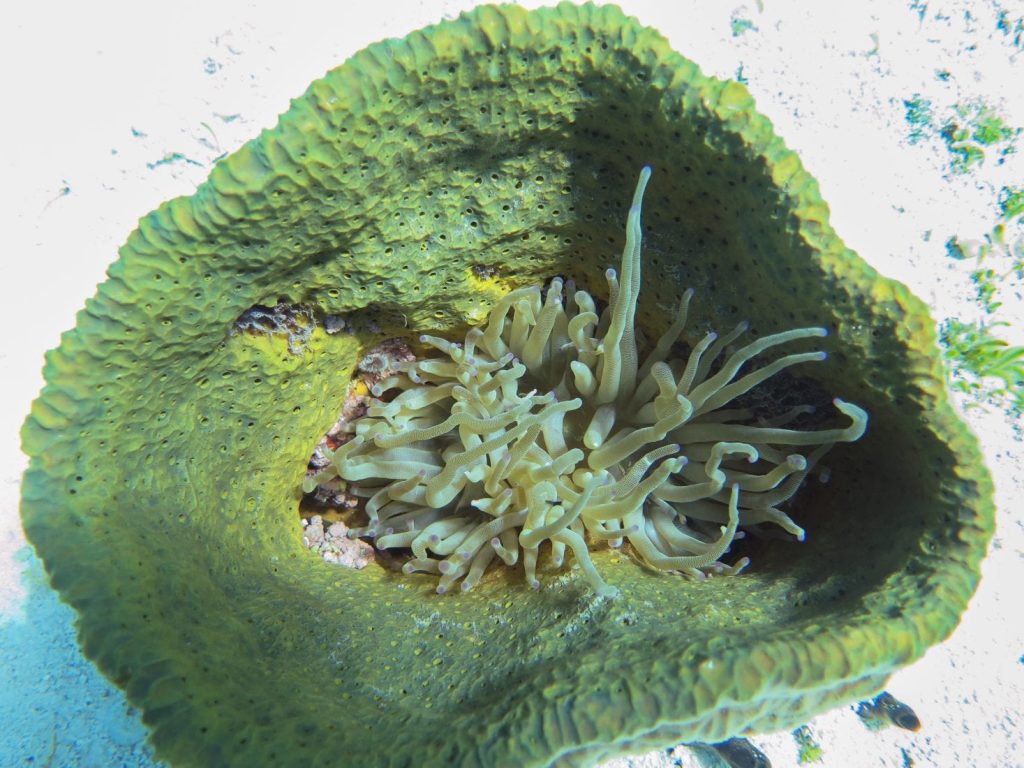
Above: Verongula gigantea with anemone Condylactis gigantea. (Valeria Pizarro)
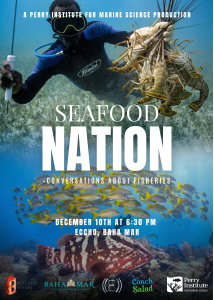
“Seafood Nation” Documentary Premiere Explores the Heart of Bahamian Culture and the Future of Fisheries
NASSAU, The Bahamas | December 5, 2025 – From the bustling stalls of Potter’s Cay to family kitchen tables across the archipelago, seafood is far more than just sustenance in
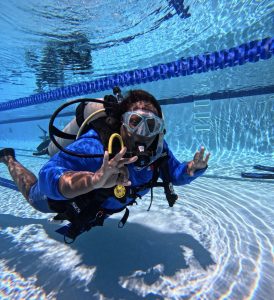
PIMS and Disney Conservation Fund Partner to Train 19 Government Divers
PIMS dive training in Nassau strengthened national coral restoration capacity across government agencies. Bahamas Dive Training Builds National Coral Restoration Capacity Last fall, between the months of September and October,
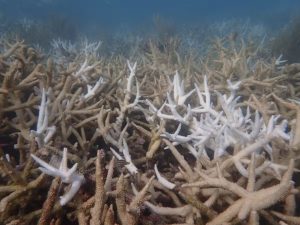
Florida’s Coral Reef Crossed a Line: What Functional Extinction Really Means for Elkhorn and Staghorn Corals
Reefs didn’t just bleach. They functionally vanished in one summer. A new Science study co-authored by researchers from the Perry Institute for Marine Science (PIMS) has found that Florida’s two
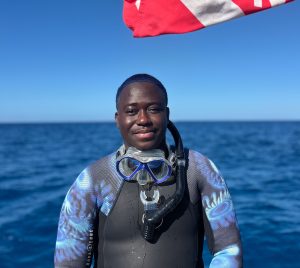
Q&A: Understanding the IDC Course at PIMS with Duran Mitchell
A former aquarist turned coral conservationist, Duran is passionate about understanding how all marine life connects. PIMS & IDC: Empowering New Dive Instructors for Marine Conservation PIMS & IDC: Empowering
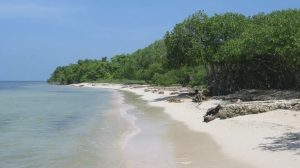
Forbes Shines a Spotlight on Coral Reef Restoration in the Caribbean
When Forbes highlights coral reef restoration, it signals something powerful: the world is paying attention to the urgent fight to protect reefs. And solutions are within reach. Recently, Forbes featured Dr. Valeria
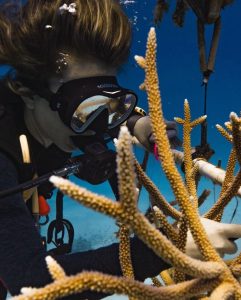
New Reef Rescue Diver Course: Volunteer in Coral Reef Restoration Abroad
Coral reefs are often called the rainforests of the sea—complex ecosystems that shelter a quarter of all marine life, feed millions of people, protect coastlines from storms, and attract travelers


